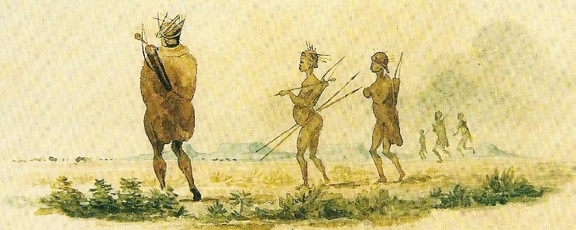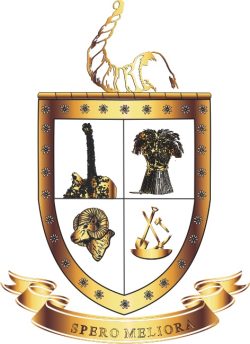Indigenous People of the Area

The Indigenous Inhabitants of the Area
The original indigenous inhabitants of the region were the San and Namas. They did not see themselves as different ethnic groups. The social structure and languages of the two groups shows great similarity. They both speak languages which is remarkable in the prevalence of click consonants. The Namas are part of the indigenous people who called themselves Khoikhoin, which can be translated as men of men or real human beings. They draw a clear distinction between themselves and the San whom they saw as a property less class of people.
San
The San led a nomadic life as hunters and gatherers. They lived of the hunting of game and collection of edible plant and animal products. They lived in harmony with their natural environment and did not stay in permanent dwellings but lived in caves or poorly constructed temporary shelters. They roamed the area as small hunting groups who sometimes clashed with the Nama. The San did not seem to have any general or collective name for themselves. The word San is derived from a Nama word “sa”, which means to settle, reside or rest. San can therefore be translated as original inhabitant. The word San has a negative meaning in the Nama language. The Nama did not see the San as a different ethnic group, but as a lower social class that don’t own livestock.
The Dutch settlers in called them by names like Bosjemens, Bosmanekens or Bosiesmans, from which the name Bushmen was later derived.
Namaqua
The second indigenous group who lived in the area was the Nama. They are part of the Khoikhoi, who call themselves the men of men or real people to distinguish themselves from the San, who were living of the veld and who had no cattle. The Nama were nomadic stock farmers, who moved around with their livestock with the changing of seasons in search of gracing and water resources. The Nama lived within a certain territory as nomads. They lived in reed houses which they called /haru oms. These houses were the ideal structure for their nomadic life, because it is simple to dismantle, carry on the backs of oxen and erect it somewhere else. The Nama were organised into smaller social units with a chief as head. The chief ruled jointly with the other male heads of families, who made up the tribal council.
According to the historian, Elizabeth Trüper, cattle was very important in the social lives of the Nama: “With the Nama, their cattle were the central measure of wealth and the foundation of their social reputation. Rich cattle owners were able to secure their followers’ loyalty because they were allowed to keep a part of the proceeds of the herd and also of the new-born animals. If somebody lost their cattle through theft or sickness, he was able to earn a new herd. In general, a man or woman would not be permanently without property in Nama society.”
